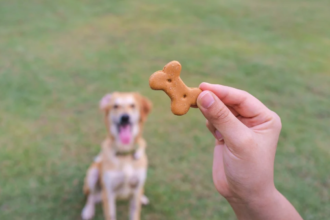For many city dwellers, pigeons are familiar sights in public spaces, often seen pecking at crumbs on sidewalks or roosting on building ledges. While they may appear harmless, large pigeon populations can lead to challenges like damage to infrastructure and health concerns. Understanding pigeon behaviour is critical for implementing effective control measures. By harnessing knowledge of their habits and needs, it is possible to develop strategies that are both efficient and humane.
Efforts for pigeon management often compare to strategies used in behavioural psychology. Observing how pigeons respond to different stimuli, such as the availability of food or nesting materials, plays a vital role in behavior-based techniques for smarter pigeon control; techniques such as eliminating accessible food sources or installing physical deterrents in common nesting areas can significantly influence pigeon populations and reduce their presence in unwelcome locations.
With a combination of scientific research and practical applications, property owners and urban planners can address pigeon challenges more effectively. Some solutions focus on long-term impact, like using contraceptive methods to control reproduction. For instance, one approach involves using products that act as pigeon birth control, ensuring sustainable population management.
Key Takeaways
- Understanding pigeon behaviour improves control strategies.
- Behaviour-based techniques involve reducing food and nesting.
- Long-term solutions include pigeon birth control.
Unravelling Pigeon Behaviour
Pigeons, particularly the species Columba livia, showcase intriguing behaviours shaped by their adaptations to urban environments. Their cognitive capabilities, social structures, and interactions with human spaces provide insights into their management. Understanding these facets is key to developing humane and efficient control strategies.
Cognitive Abilities and Learning
Pigeons possess remarkable cognitive abilities, including strong memory and learning skills. Studies demonstrate that pigeons can engage in associative learning, a fundamental aspect often compared to human cognition. The work of psychologists such as B.F. Skinner highlighted pigeons’ capacity for operant conditioning, where behaviours are modified by rewards or punishments.
These cognitive traits make pigeons resilient and adaptable in ever-changing urban environments. Researchers have found that pigeons can recognize patterns and objects, which aids in navigation and survival in bustling cities. Understanding these learning processes is vital for developing better strategies in pest management and urban planning.
Social and Urban Adaptations
Urban pigeons, commonly known as feral pigeons, have adapted remarkably well to city life, displaying a wide range of social behaviours. These birds, part of the Columbidae family, form complex social hierarchies that are not heavily influenced by environmental factors, allowing them to navigate urban settings effectively. A study on pigeon leadership found that their social dynamics are shaped largely by personality and dominance rather than surroundings.
In urban environments, pigeons exploit human structures, such as ledges and bridges, for nesting, and benefit from discarded food. These behaviours highlight a significant bird-human association, emphasizing the need to manage their population while respecting their role in urban nature.
The Science of Pigeon Management
Effective management of urban pigeon populations involves comprehending their behaviours and the human-nature interactions they provoke. Strategies for control often involve humane methods that reflect their cognitive and social traits. Tools like bird spikes or netting can deter habitation without harming the birds, reflecting a respect for their adaptation capabilities.
Urbanization influences pigeon behaviour, making tailored management essential. By studying aspects like social structures and cognitive abilities, as well as understanding urbanization impacts, urban planners and wildlife managers can design environments that reduce conflicts between humans and pigeons. This balanced approach champions a harmonious co-existence in shared spaces.
Effective Control and Management Strategies
To manage pigeons effectively, it is crucial to understand their ecological impact, utilize integrated strategies, and focus on controlling their population and reproduction. A mix of environmental, behavioural, and biological approaches can be applied to achieve long-term solutions.
Ecosystem Impact and The Pigeon Paradox
Pigeons, particularly feral rock doves, play a unique role in urban ecosystems. While they are considered an ecological threat due to their status as an invasive species, they also contribute to the biodiversity of urban areas, creating what is known as the “pigeon paradox.” Their presence can alter spatio-temporal dynamics, influencing not only wildlife interactions but also the distribution of resources, making environmental governance complex.
Interestingly, while pigeons can be problematic, they can also deter other nuisance species such as certain insects by reducing available waste. Mitigating pigeons’ negative impact involves implementing deterring systems and fear appeals while recognizing their ecological role. Additionally, addressing health hazards associated with pigeon droppings, such as the spread of diseases and heavy metals, is vital in maintaining a healthy urban environment.
Integrated Damage Management
Integrated wildlife damage management focuses on combining various methods to address pigeon issues effectively. Behavioural strategies, such as installing physical barriers and utilizing environmental psychology to promote green consumption and waste reduction, can be effective. Understanding and modifying pigeon behaviour by eliminating food sources and blocking nesting areas is fundamental.
Technology also plays a role, with automated deterring systems that discourage pigeons from frequenting undesirable locations. Furthermore, feral cats can serve as a natural deterrent to pigeons in certain settings. By combining these methods, urban areas can achieve a balance between controlling pigeon populations and preserving the urban ecosystem’s integrity.
Population and Reproduction Control
Key strategies for controlling pigeon populations involve managing their reproduction rates. Understanding genetic differentiation among feral rock doves can help develop targeted campaigns. Behaviour modification techniques through behavioural deterrents and exclusion can help reduce colony sizes over time.
A humane approach to reproduction management includes utilizing chemical contraception, which is effective yet environmentally safe. By aligning control efforts with reproduction timelines and utilizing spatio-temporal analysis, it is possible to limit population growth sustainably. Consistent monitoring and adaptation ensure long-term success, contributing to urban sustainability while maintaining species balance.
Conclusion
Understanding pigeon behaviour is crucial for effective management. By identifying what attracts pigeons to urban areas, such as food availability and nesting sites, strategies can be developed to mitigate their presence.
Implementing humane control methods, like habitat modification and exclusion techniques, can help maintain balance in urban environments.
Effective pigeon management contributes to cleaner environments and reduces potential health risks, improving quality of life for city residents.













